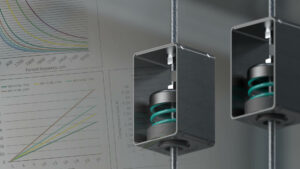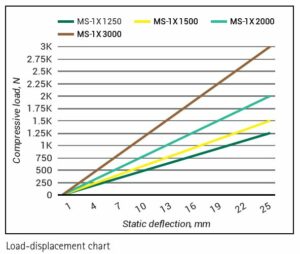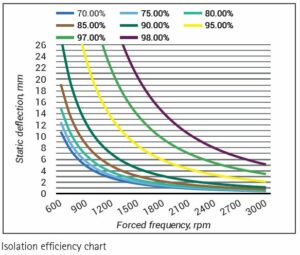 To select the correct anti vibration mounts for your installation, there are a number of factors to consider that will influence the type of product that you require.
To select the correct anti vibration mounts for your installation, there are a number of factors to consider that will influence the type of product that you require.
Here is an overview of some of the considerations:
Once you have a full overview of the installation requirements and external considerations, you need to select the anti vibration mount or isolator that provides you with the most efficient solution. A mount with soft rubber would isolate vibrations more, but if the rubber is too soft for the application, it might not be able to recover from deformity caused by the stress forces of the equipment, and it will not be as effective.
Therefore you need to determine the level of vibration transmission to the structure so that you can select a product which is capable of dampening the vibrations effectively. The simplest way to determine vibration transmission to the structure is to use static deflection and vibration isolation efficiency charts available in the Walraven VibraTek® product documentation.
First, determine the static deflection of an isolator at a given load using the load displacement chart. Static deflection refers to how much your anti-vibration mount will compress under the weight of the equipment.
Then plot the deflection on the isolation efficiency chart to determine the degree of isolation for the given application. All charts are available in our brochure.


Our brochure contains a useful matrix of products and applications to give you an initial idea of what type of vibration isolator might be suited to your project. It also contains all the charts for each product to help you decide which product would suit your installation.
In the Walraven portfolio, you can find a complete range of spring and rubber mounts, spring hangers, rubber absorbers and anti vibration pads.
Find out more about dealing with vibration in HVAC installations or browse our anti-vibration product range.
Dealing with vibration in HVAC installations